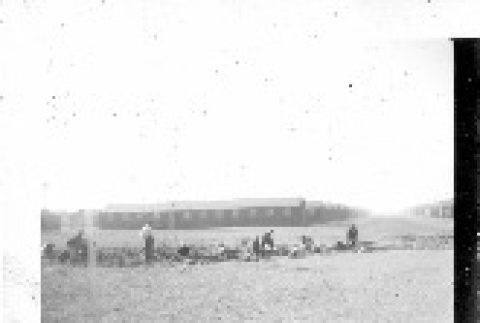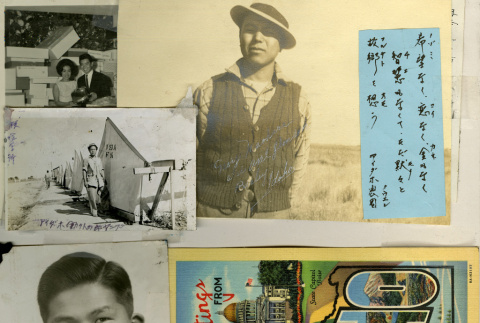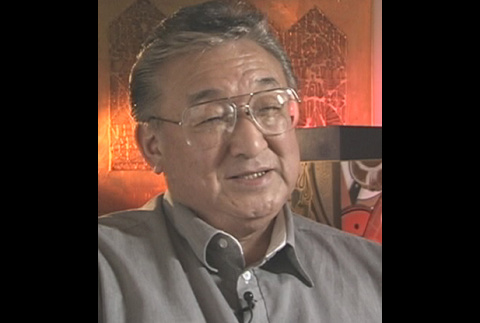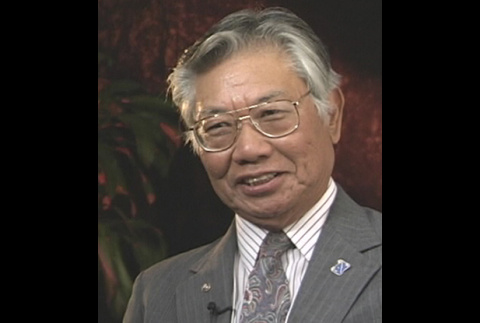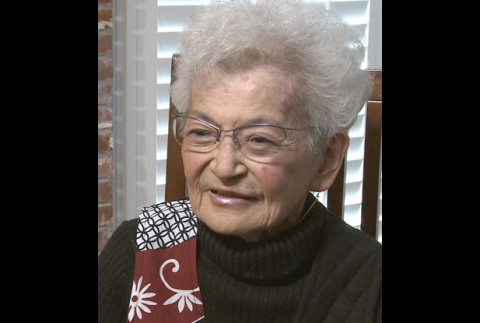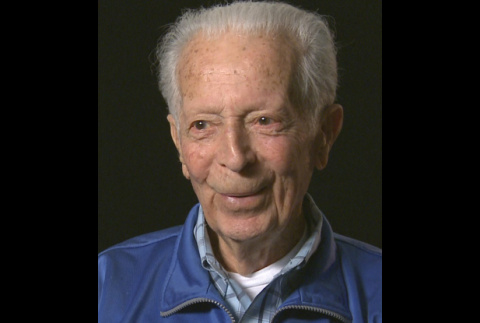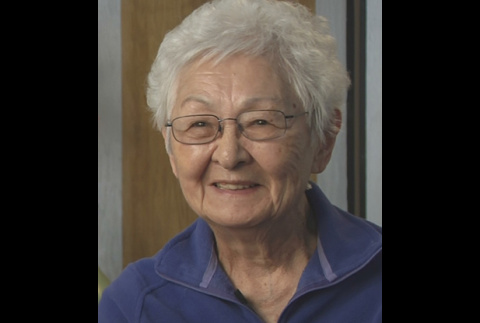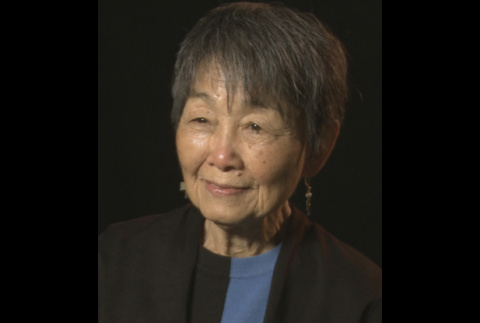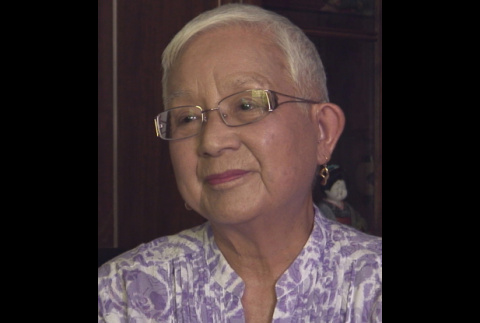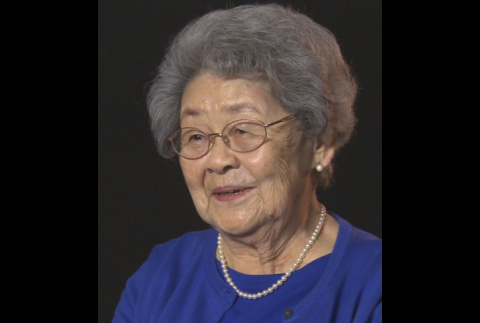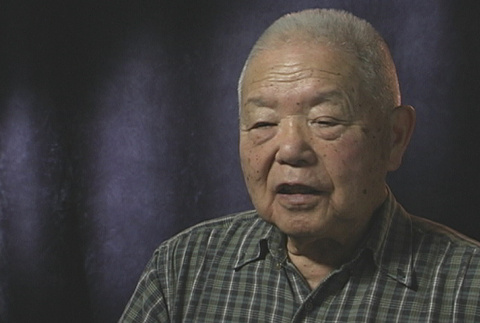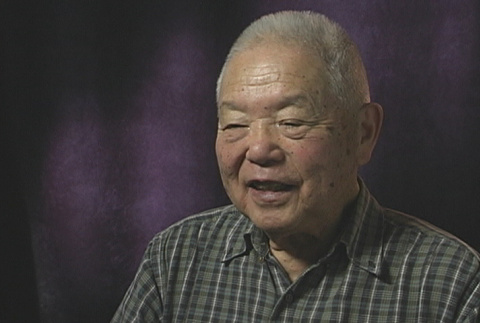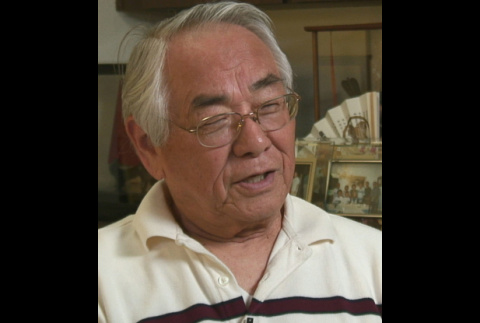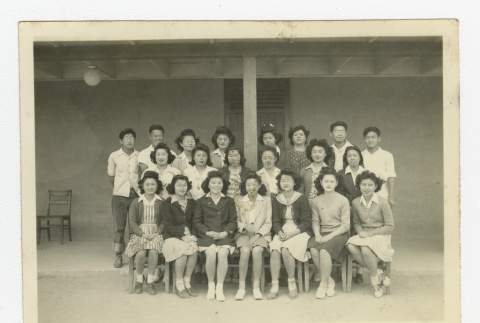975 items
975 items
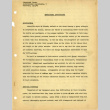
doc
Structural report, institutional adjustments, V: educational institutions (ddr-csujad-26-20)
Essay observing education levels, types of students, and establishment of education programs at Tule Lake for English speaking students. Includes descriptions of programs for various age groups including nursery, primary, secondary, adult education, college and the Student Relocation Council. Report compiled as a portion of the Japanese American Evacuation and Resettlement Study (JERS). See this object …
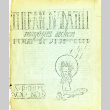
doc
Tulean dispatch magazine section, vol. 1, no. 9 (ddr-csujad-26-50)
Monthly publication at Tule Lake incarceration camp including stories, poems, commentary and creative writing. Current issue includes: "Question 28" by Shuji Kimura; "Mandy's dream" by Frank Hijikata; "Toppers in camp" by Yuri Kobukata, Mary Harumi Sakai, Lorraine Takayama; "Band leader" by Bryan Mayeda, "Bachelors' quarter" by George Nakamura, "Poultry farm" by Makoto Kobukata, "Looking back" by …
![[Troops alert as Tule Japs defy Colonel], newspaper article on Tule Lake protests, November 13, 1943 (ddr-csujad-2-40)](https://ddr.densho.org/media/cache/8c/c4/8cc40b97bd7e9f65dc0e0d61821bae0a.jpg)
doc
[Troops alert as Tule Japs defy Colonel], newspaper article on Tule Lake protests, November 13, 1943 (ddr-csujad-2-40)
Newspaper article about protests at Tule Lake Camp in November, 1943 which led to martial law being in place for three months. Article describes Colonel Verne Austin, Commander of Military Police, trying to regain control after the protests. He is quoted as saying "Henceforth the Army, and not trouble making Jap 'committees' will dictate camp life." …

img
Incarcerees Digging (ddr-csujad-13-6)
A group of people are photographed digging in the ground in a large expanse of land inside the Tule Lake incarceration camp. The housing barracks or some of type of structure are also pictured in the distance. Caption on back of photograph reads, "Jap inmates [sifting] to collect stones to make necklaces. Tulelake Calif (Nov 43)" …

img
George Naohara photo album (ddr-csujad-38-1)
A photo album compiled by George Nobuo Naohara, a Kibei Nisei, who was incarcerated at Manzanar, Jerome, and Tule Lake incarceration camps during World War II. Included are photographs taken during/after World War II, depicting his farm labor experience in Idaho and Utah, incarceration in the Jerome incarceration camp, and Army language school training. See this …

doc
Japanese Americans in internment camps 1942-1946, physical layout of the WRA camps (ddr-csujad-55-2495)
Document detailing the physical layout and qualities of incarceration camps. Covers: isolation centers, assembly centers, permanent relocation centers, farm area, administrative area, internee area, barracks, mess hall, boiler room, recreation hall, block manager, ward, hospital schools, canteens, utilities, employment and salary, other centers, progressive project directors, camp closing, Tule Lake closure, and post-war years. See this …

Narrator Frank S. Fujii
Nisei male. Born January 14, 1930, in Seattle, Washington. Grew up in the Jackson Street neighborhood of Seattle, Washington. Incarcerated at Puyallup Assembly Center, Washington, and Tule Lake concentration camp, California. Resettled in Seattle. Former teacher and varsity basketball coach at Seattle's Franklin High School and administrator at Seattle Central Community College.

Narrator Hitoshi H. Kajihara
Nisei male. Born March 12, 1928, in Oyster Bay, Washington. Incarcerated at Tule Lake concentration camp, California. Served as fundraising chair for the Japanese American Citizens League's Legislative Education Committee from 1984 to 1985 and raised over half a million dollars for the redress effort. Became president of the National JACL in 1986.

Narrator Marianne West
Nisei female. Born November 4, 1926, in Seattle, Washington. Family lived in Leavenworth, Washington, then moved to the West Coast. After the outbreak of World War II, family was removed from Bellingham, Washington, to Tule Lake concentration camp, California. Transferred to Heart Mountain concentration camp, Wyoming, before leaving to resettle in Spokane, Washington.

Narrator Betty Fujimoto Kashiwagi
Nisei female. Born February 9, 1929, in Isleton, California. Grew up in Isleton where parents operated a boarding house. After the bombing of Pearl Harbor, removed to the Sacramento Assembly Center and Tule Lake concentration camp, California. In 1943, transferred to the Jerome concentration camp, Arkansas, then, when that camp closed, to the Rohwer concentration camp, …

Narrator Larry R. Pacheco
White male. Born November 4, 1922, in San Jose, California. Drafted into the military after Japan bombed Pearl Harbor. During World War II, served as a military police guard at the Tule Lake concentration camp, California. Shipped overseas, and was captured in France as a prisoner of war and held in Germany. After completing military service, …

Narrator Jessie Hatsue Akiyama Okazaki Harry
Nisei female. Born October 24, 1925, in Parkdale, Oregon. Grew up in Parkdale, where parents ran a farm. During World War II, removed to the Pinedale Assembly Center, California, and the Tule Lake concentration camp, California, before transferring with family to the Minidoka concentration camp, Idaho. Left camp to attend sewing school in New York before …

Narrator May Ohmura Watanabe
Nisei female. Born May 13, 1922, in Chico, California. Grew up in Chico, where parents ran a produce store. Was in college when Japan bombed Pearl Harbor, and was removed with her family to the Tule Lake concentration camp, California. Left camp to attend school in Syracuse, New York, and become a public health nurse. Later …

doc
George Naohara's handwritten note (ddr-csujad-38-160)
Handwritten note from "George Naohara photo album" (csudh_nao_0001), page 15. George Nobuo Naohara details his experience after moving from Idaho to Utah. He was a farm labor for sugar beets farm at Norman Johnson in Utah but was working in a hotel as a dish washer during the winter. He and his friend, Tadashi Sakaida, visited …

Narrator Eiko Yamaichi
Nisei female. Born October 25, 1924, in Seattle, Washington. Grew up in Snoqualmie, Washington, where father worked for the Weyerhaeuser company before the war. During World War II, removed to the Pinedale Assembly Center, California, and the Tule Lake concentration camp, California. Later transferred to the Jerome concentration camp, Arkansas, and the Gila River concentration camp, …

Narrator Misa Taketa
Nisei female. Born January 18, 1925, in Seattle, Washington. Grew up in the South Park area, south of Seattle, where parents ran a farm. During World War II, removed to the Pinedale Assembly Center, California, and the Tule Lake concentration camp, California. After leaving camp, lived and worked in Ontario, Oregon, for a time, before living …

Narrator Edith Watanabe
Nisei female. Born August 29, 1921, in Seattle, Washington. Spent prewar years in Burlington, Washington. Was just starting college when incarcerated at Tule Lake concentration camp, California. Left camp early because of illness and married a Nisei GI, Harvey Watanabe. Lived in Midwest for duration of war and resettled in Seattle, Washington following the war.
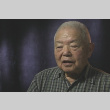
vh
Hideo Hoshide Interview I (ddr-densho-1000-184)
Nisei male. Born September 25, 1917, in Tacoma, Washington. Grew up in Tacoma except for living in Japan for several years at age four. Attended the University of Washington in Seattle, majoring in Political Science, Far Eastern Studies, with a minor in journalism. Prior to World War II, worked as sports editor for community newspaper, The …
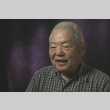
vh
Hideo Hoshide Interview II (ddr-densho-1000-185)
Nisei male. Born September 25, 1917, in Tacoma, Washington. Grew up in Tacoma except for living in Japan for several years at age four. Attended the University of Washington in Seattle, majoring in Political Science, Far Eastern Studies, with a minor in journalism. Prior to World War II, worked as sports editor for community newspaper, The …

Narrator Osamu Mori
Nisei male. Born July 13, 1928, in Wilmington, California. Grew up in San Pedro, California, where parents operated a farm. After the bombing of Pearl Harbor on December 7, 1941, removed with family to the Santa Anita Assembly Center, California, and the Jerome concentration camp, Arkansas. Family answered "no-no" on the so-called "loyalty questionnaire," and was …

Narrator Masako Murakami
Sansei female. Born March 27, 1934, in San Francisco, California. Parents were both Kibei from Seattle, Washington, and Bakersfield, California. Grew up in San Francisco, California, where father was in sales. During World War II, removed to the Gila River concentration camp, Arizona. After father signed "no-no" on the so-called "loyalty questionnaire," transferred to the Tule …
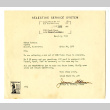
doc
Letter from Jennie G. Hermon, Clerk, Local Board No. 277, Selective Service System, to Nobuo Naohara, March 2, 1945 (ddr-csujad-38-573)
A letter from Jennie G. Hermon, Local Board No. 277, Selective Service System, to George Nobuo Naohara incarcerated in the Tule Lake camp in California. It requires George to answer all the questions in DDS from 304A. It appears that George did not follow their instruction, crossing out his answers on the forms, and the office …
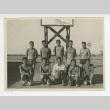
img
Nisei men's basketball team (ddr-csujad-44-11)
A photograph of ten Nisei men in front of a basketball goal at Tule Lake, California. They are presumably basketball team members. The men are in two rows. Five men are standing in the back row. Five men are kneeling in the front row. The man in the middle of the front row is holding a …
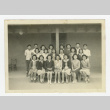
img
Art Club (ddr-csujad-44-35)
A photograph of Nisei students incarcerated at Tule Lake, California. They are presumably the member of Art Club. The large group is posing for the photo in three rows in front of a barrack. The back two rows are young men and women standing behind a row of young women seated in a row of chairs. …
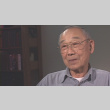
vh
Homer Yasui Interview I (ddr-one-7-26)
Nisei male. Born December 28, 1924, in Hood River, Oregon. Grew up in Hood River, where father and uncles ran a store. During World War II, removed to the Pinedale Assembly Center, California, and the Tule Lake concentration camp, California. After leaving camp, attended college in Denver and Philadelphia. Eventually became a physician and returned to …


![[Troops alert as Tule Japs defy Colonel], newspaper article on Tule Lake protests, November 13, 1943 (ddr-csujad-2-40)](https://ddr.densho.org/media/cache/33/f8/33f88bfedf28143ae307c02d59a808ed.jpg)
